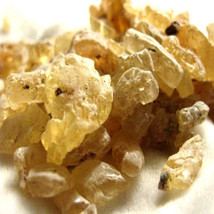Rendered at 19:37:16 05/30/25
5 GRAMS IMPORTED SUMATRA GOLD COPAL
$4.89
Shipping options
Seller handling time is 1 business day Details
$4.99 via to United States
Return policy
Refunds available: See booth/item description for details
Purchase protection
Payment options
PayPal accepted
PayPal Credit accepted
Venmo accepted
PayPal, MasterCard, Visa, Discover, and American Express accepted
Maestro accepted
Amazon Pay accepted
Nuvei accepted
Shipping options
Seller handling time is 1 business day Details
$4.99 via to United States
Return policy
Refunds available: See booth/item description for details
Purchase protection
Payment options
PayPal accepted
PayPal Credit accepted
Venmo accepted
PayPal, MasterCard, Visa, Discover, and American Express accepted
Maestro accepted
Amazon Pay accepted
Nuvei accepted
Item traits
| Category: | |
|---|---|
| Quantity Available: |
Only one in stock, order soon |
| Condition: |
New |
| Scent: |
SUMATRA GOLD COPAL |
| Type: |
Resin Incense |
| Brand: |
HeirloomSupplySuccess |
Listing details
| Shipping discount: |
Items after first shipped at flat $0.50 | Free shipping on orders over $100.00 |
|---|---|
| Price discount: |
5% off w/ $10.00 spent |
| Posted for sale: |
More than a week ago |
| Item number: |
512852980 |
Item description
5 GRAMS IMPORTED QUALITY SUMATRA GOLD COPAL
Each country has it's own destinct scent, color, and aroma
Copal (disambiguation).
Copal is a type of resin produced from plant sap. The term is particularly identified with the aromatic tree resins used by the cultures of pre-Columbian Mesoamerica as ceremonially burned incense and other purposes.[1] More generally, the term copal describes subfossil resinous substances in an intermediate stage of polymerization and hardening between "gummier" resins and amber.[2] The word copal is derived from the Nahuatl language word copalli, meaning "incense".[3][4][5][7][6]
To the pre-Columbian Maya and contemporary Maya peoples it is known in the various Mayan languages as pom (or a close variation thereof),[3][8] although the word itself has been demonstrated to be a loanword to Mayan from Mixe-Zoquean languages.[citation needed]
Copal is still used by a number of indigenous peoples of Mexico and Central America as an incense and during sweat lodge ceremonies.[9] It is available in different forms. The hard, amber-like yellow copal is a less expensive version. The white copal, a hard, milky, sticky substance, is a more expensive version of the same resin.
Copal was also grown in East Africa, (the common species there being Hymenaea verrucosa) initially feeding an Indian Ocean demand for incense. By the 18th Century, Europeans found it to be a valuable ingredient in making a good wood varnish. It became widely used in the manufacture of furniture and carriages. By the late 19th and early 20th century varnish manufacturers in England and America were using it on train carriages, greatly swelling its demand.
In 1859 Americans consumed 68 percent of the East African trade, which was controlled through the Sultan of Zanzibar, with Germany receiving 24 percent. The American Civil War and the creation of the Suez Canal led to Germany, India and Hong Kong taking the majority by the end of that century.[10]
East Africa apparently had a higher amount of subfossil copal, which is found one or two meters below living copal trees from roots of trees that may have lived thousands of years earlier. This subfossil copal produces a harder varnish. Subfossil copal is also well-known from New Zealand, Japan, the Dominican Republic, Colombia and Madagascar. It often has inclusions and is sometimes sold as "young amber". Recent scientific datings demonstrated that the subfossil copal from Colombia and Madagascar is usually not older than about 200 years. Subfossil copal can be easily distinguished from genuine amber by its lighter citrine colour and its surface getting tacky with a drop of acetone or chloroform.[11]
Instructions on How To Burn Resin , Bakhur Incense and/or Scented Oils
Here's a few items you'll need to get started:
A Burner (for placing the lit charcoal and incense onto)
2. Charcoal Tablets (charcoal tablets get very, so be careful)
3. Matches or a cigarette lighter
4.Resin , Bakhur Incense and/or Scented Oils (usually comes in small packets of natural chunks, tear drops, wood chips extract powder, cones, or oils)
5.A Metal Tong (for grabbing and holding hot things) To begin:
1. Open the package of charcoal, and place a single disk or tablet onto the burner.
2. Light the single disk or tablet with the match or cigarette lighter.
3.Once the charcoal tablet is lit, just place a small amount of Resin , Bakhur Incense and/or Scented Oils (using the Metal Tong) onto the hot Charcoal. You will notice the resin will begin to melt, smolder and emit the aroma.
This should last for about 5-10 minutes, depending on how much
resin you used. Be careful not to put too much resin on the Charcoal.
Enjoy wonderful natural aromas indoor or outdoor !!!
Added to your wish list!

- 5 GRAMS IMPORTED SUMATRA GOLD COPAL
- 1 in stock
- Handling time 1 day.
- Returns/refunds accepted
Get an item reminder
We'll email you a link to your item now and follow up with a single reminder (if you'd like one). That's it! No spam, no hassle.
Already have an account?
Log in and add this item to your wish list.








